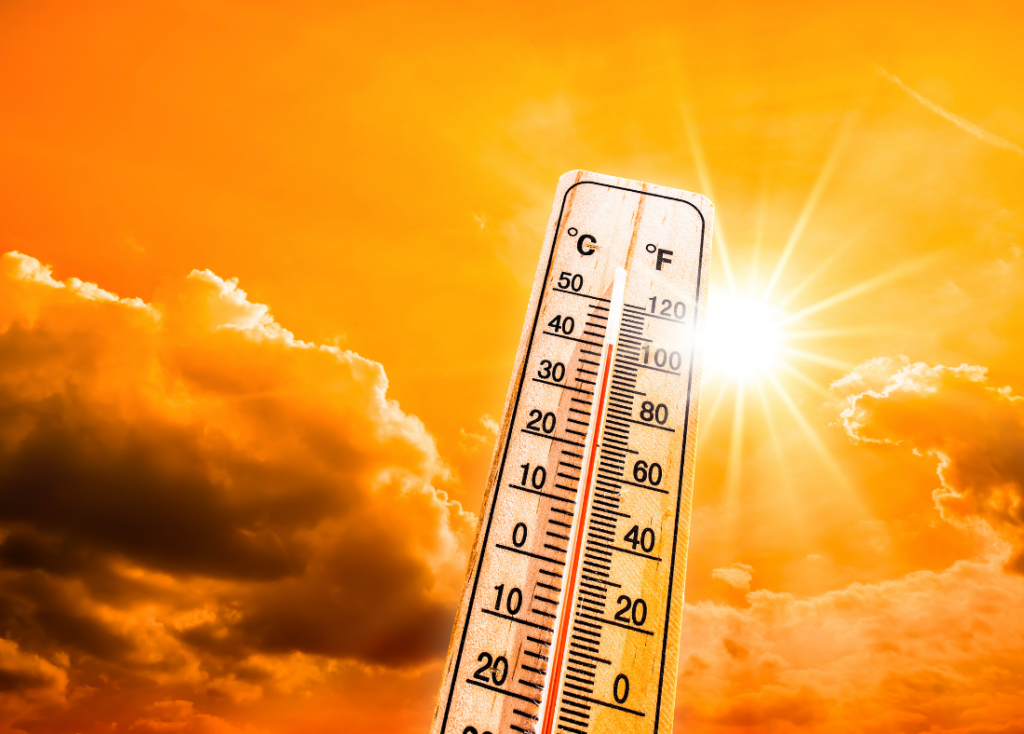By Deanna Alderson, Climate Writer

Californians faced an unsettling reality as they headed into Labor Day weekend: it was brutally hot outside and there was no relief in sight. Temperatures soared to 1100 in the valleys and deserts, and the demand for air-conditioning pushed the power grid to the brink of collapse. Even the coasts weren’t spared, with popular beach spots reaching upwards of 950. Families abandoned their picnics and holiday barbecues, and cities opened cooling centers to give residents a few hours reprieve from the scorching heat. So why is California getting so hot? And is this our new normal?
California has always had warm summers, but the last few summers have shattered heat records across the state. The summer of 2021 was the hottest ever recorded, edging out 2020’s already record-breaking heat. This year’s Labor Day weekend heat wave was the longest and hottest in state history.
This kind of heat isn’t just uncomfortable; it’s deadly. About 4,000 Californians died due to excessive heat in the last decade. Extreme heat is the deadliest weather event in the US and kills more people than hurricanes, floods, and wildfires combined. And almost 30% of California households still don’t have air conditioning.
Climate change is making most places warmer, and California is no exception. With more greenhouse gasses insulating the planet, we’re going to continue to see higher temperatures year-round. But the main reason California is getting so hot is because climate change is wreaking havoc on global weather patterns.
Heat waves are caused by high pressure systems, which form when cool, dense air sinks to the ground. This air becomes warmer as it compresses towards the earth’s surface, and the high pressure pushes away clouds, leading to higher temperatures and lower humidity.
Normally, high pressure systems don’t stick around for too long. Cold arctic winds known as the polar jet stream push these systems apart. But climate change is making the arctic much warmer, which makes the jet stream slower and weaker. A slower jet stream means heat waves can linger in California for days or even weeks.
When high pressure systems persist over a large area, it’s known as a heat dome. Heat domes can spread over several states, and the huge amount of trapped, warm air can lead to extremely high temperatures, even in places that don’t typically see intense heat. The Labor Day weekend heat dome led to scorching temperatures across five western states.
California’s extreme heat is here to stay, and unless we act fast to stop climate change, it will get worse. However, there’s hope. Become an advocate for climate change in your community and encourage your friends and family to vote for leaders who are working to save the planet. Take steps to reduce your energy usage and make sure you have a plan in place to keep cool on the hottest days.
Preserving California’s wild spaces is another way to fight the worst effects of climate change. Trees and forests not only soak up carbon dioxide from the atmosphere, but they also create a beneficial microclimate with lower temperatures and higher humidity. Planting trees in cities provides shade and can prevent urban areas with lots of concrete and asphalt from becoming heat islands.
